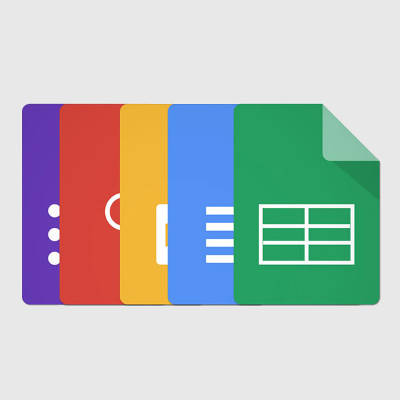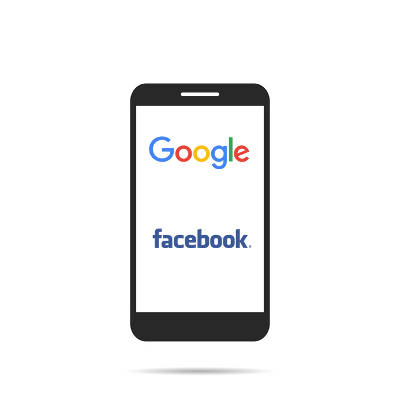Is Your Printer Wasting More Money Than it’s Worth?

Is your printer printing dollars, or eating them? Today’s blog is dedicated toward helping your business save as much money as possible on printing costs so that you can achieve the best return on your printing investment.
Is Your Printer Wasting More Money Than it’s Worth?

Is your printer printing dollars, or eating them? Today’s blog is dedicated toward helping your business save as much money as possible on printing costs so that you can achieve the best return on your printing investment.
Tip of the Week: It’s Easy to Color-Code Your Google Drive

By default, folders in Google Drive display as a muted gray color. Unfortunately, this simplistic choice can make certain folders difficult to find in a sea of gray. For this week’s tip, we’ll go through how to change the color that a folder displays in Google Drive.
First, you will need to navigate to the folder whose color you wish to change. Right-clicking on the folder will bring up a menu. About halfway down the menu, you will find the option Change color, with the image of a painter’s palette and an arrow indicating more options. Those options will be the 24 colors the folder icon can display as.
Once you’ve decided on a color to use for that particular folder, click on it. The change will be made immediately, so you will know right away if your choice of color will work for the folder you have edited.
Unfortunately, this feature doesn’t extend to the contents of these folders. Therefore, your Google Docs and Sheets will have to remain blue and green, respectively.
Keep in mind, you will be the only one that sees these color changes. This feature is more of a means for individual users to customize their own experience with Google Drive. Therefore, describing something as “the red folder” will likely mean something very different for someone else as it does for you.
Will you have a particular system for color-coding your folders? Let us know in the comments, and make sure to subscribe to Catalyst Technology Group’s blog for more handy tips!
It’s Silly Not To Ask These Important IT Questions

While being tech-savvy is much more commonplace than it used to be, asking a question about IT can still make one a bit nervous. This leads to many who are somewhat unlearned in technology feeling that they will be mocked for asking “dumb” questions. Well, fear not–we’ll explain some of the more common questions you might want to ask about technology.
We’re talking about what being “up to date” means in the world of technology. Often times users might ask questions such as “Why is your operating system’s version important,” or “Why does it matter if I have Windows 10 or not?” Other times, it will be used in the context of the technology being “updated” to protect against potential security troubles. Even more puzzling might be the term “patched,” which you may have thought was something you did to a piece of clothing that has seen some wear and tear.
Let’s examine some of the most common IT questions that people ask.
Why Is My Operating System Version Important?
It’s ideal to be using the latest version of your device’s operating system. By this, we mean the software that allows your devices, like smartphones or workstations, to be secure and useful–be it iOS, Windows, Android, Windows Server, or otherwise. That being said, the sad reality is that this is unlikely due to budget constraints and other complications. At the very least, be sure to keep your PCs and servers running operating systems that are still being supported by patches and security updates. These important updates resolve flaws that can place your device at risk of a hacking attack. Systems like Windows XP, Windows Vista, Windows Server 2000, and any of their predecessors have reached what is called the End of Life event, where they no longer receive updates or security fixes. Even just one of these machines on an infrastructure could put your business at risk. We can guarantee that the upgrade to a more recent OS is much cheaper than being hit by a threat such as malware or other security breaches.
How Do Security Patches Assist with Network Safety?
Even the most recent operating systems will have vulnerabilities that need to be fixed…eventually. Throughout the lifespan of your business’s technology, hackers will uncover vulnerabilities that can be exploited to steal data and so much more. Developers will issue patches and updates to resolve these. It’s a vicious cycle–hackers try to outdo security companies and developers at all times, while it takes everything that security companies have just to keep the constant threat of a data breach at bay. It’s your responsibility to make sure that all of this effort to keep you safe isn’t for naught by implementing them as they are released.
How Important is Data Backup?
Data backup is an important part of sustaining your business. Your data might be the only thing keeping you in the game following a disaster. Businesses have started to rely on digital records, updates, communications, payments, storage space, invoices, accounting, and much more–all in an attempt to simplify operations. If you were to lose all of the progress you’ve made on a six-month project in the blink of an eye without data backup, chances are you’ll be having a rather upsetting conversation with someone your business deals with, be it an angry client or a negligent employee.
Why Does it Matter Where Backups Are Stored?
If you store your backups in the same location as the rest of your data, they could both be wiped out by an unexpected event. Even if it’s not stored on the same device, but rather, the same infrastructure or network, this could be problematic. What if a disaster is capable of ending your business’s physical presence in the world in a matter of moments? A fire or tornado isn’t going to spare your server. Therefore, you need to keep it backed up at all times so as not to lose everything in one fell swoop.
Remember, there are no stupid questions when it comes to your business and IT. If you need some questions answered, reach out to Catalyst Technology Group at (317) 705-0333.
Tip of the Week: Dynamic Lock Isn’t Perfect, But It’s A Start

You’ve been told that it’s a best practice to ensure that you never leave your workstation without locking it first. Yet, if you’re only stepping away for a few minutes, it might be tempting to just allow it to remain unlocked. But what happens when you step away for longer than expected? You leave your computer exposed to all manners of threats. Thankfully, a new solution allows for a fix with a device that most are never without: the smartphone.
This trick lies in your computer having the Windows 10 Creators Update installed, which lets you connect your phone to your PC through Bluetooth. This helps your PC automatically lock itself when the two are separated. Thanks to a piconet, a type of short-range radio wave network that keeps Bluetooth devices working properly, this security measure is possible. Of course, the strength of the piconet will determine how far from your PC the device can be before the computer locks.
This Creators Update can help you create a piconet between your desktop and phone, which keeps Dynamic Lock from activating. If you remove the phone from the piconet’s range, Dynamic Lock will lock your computer to keep unauthorized users from using it.
Just keep in mind that Dynamic Lock is far from instantaneous. The device needs to be out of range, and the computer needs time to register that the connection has been severed. Only then will Dynamic Lock activate. Keeping this in mind, it’s still more secure to implement Dynamic Lock than leaving your computer unlocked all the time.
How to Set Up Dynamic Lock
To pair your phone to your PC, you want to confirm with your IT department that it won’t be an issue. Just reach out to them before following this procedure.
First, enable Bluetooth on your mobile device that you want to pair with your PC. Open Settings and access Bluetooth & Other Devices. Next, click Add Bluetooth or Other Device, which will prompt the Add a device box.
Once you’ve done this, select Bluetooth. Windows may take a moment to find your device, but once it does, it will prompt you to confirm a code that displays on both of your devices. Once you’ve done so and click Done, you’ll be brought back to the Bluetooth & Other Devices page in your Settings, where you can see your connected device.
Select Home and navigate to Accounts, where you’ll want to select Sign-In Options. You’ll find Dynamic Lock, where you check the box called Allow Windows to Detect When You’re Away and Automatically Lock the Device. Restart your PC to make sure the settings have been changed, and you’ll be all set. The only thing left to do is try it out!
For more great tips and tricks, be sure to subscribe to Catalyst Technology Group’s blog.
It’s Time to Write a Eulogy for the Internet as We Know It

The Internet is prone to change. We all know this and have experienced it firsthand. Even though we may understand this reality, it can still be rather shocking when we’re confronted with it. The latest statistics show us how the current changes of the Internet have huge implications about how we’ll all interact with the web moving forward, which may spell doom for doing “online business as usual.”
A recent report by Forrester reveals that we are spending 85 percent of our time on our mobile phones using apps, and only 15 percent in the browser. Pair this with another major trend that saw a tipping point in 2014 when more people began accessing the Internet through mobile apps than desktop computers, and you really begin to see clearly just how the web is truly changing.
By changing, we mean that people are spending far less time on their desktops (and dramatically more so on their mobile devices) perusing the Internet by going from website to website, and far more of their time online using mobile apps. Does this mean you, as a business owner, should therefore shift all of your online efforts to mobile apps?
Not necessarily, seeing as another finding from Forrester’s study shows that people are spending 85 percent of their time on their mobile device utilizing only five apps, which includes obvious apps such as Facebook and Google.
As net neutrality continues to be threatened by legislation influenced by special interests, the trend shown by these statistics threaten the same freedoms we enjoy online, only from a different angle. That angle: the business interests of a handful of companies that own these popular mobile platforms will end up dominating and controlling the online conversation. Business2Community describes it like this: “This reality on the commercial web is now being revealed as we are witnessing the rise of a duopoly. Google and Facebook. Today 90 percent of all advertising growth on digital is coming from these two companies.”
Now, don’t get us wrong, as long as there’s an Internet you’ll still be able to publish your message (whether it be personal or professional) in the same ways that were popular 10 years ago before the iPhone hit the scene (like using websites, forums, email, etc.). It’s just that, good luck getting anybody to actually listen to your message without the help of Facebook and Google to drive traffic to your site. Furthermore, online content that’s not tailored for mobile will continue to lose influence as the Internet continues to evolve in the ways that it is.
While the vast majority of us are powerless to stop such changes, all those who value the open Web have every right to mourn what the web’s becomining. An appropriate eulogy can be found in the words of Tim Berners-Lee’s (the inventor of the World Wide Web) 1995 utopian vision of how the Internet can change the world for good. Berners-Lee described his vision of the web as “an open platform that would allow everyone, everywhere to share information, access opportunities, and collaborate across geographic and cultural boundaries.”
While the web is more accessible and “open” today than ever before, one must put an asterisk at the end of this 1995 statement that communicates, “at the terms of Google and Facebook.”
From a business standpoint, the ongoing changes of the Internet presents a challenge that’s inherent with the use of any technology–the challenge to keep up with and anticipate trends, and to adapt your business model accordingly. Technology can change suddenly and you owe it to the continuity of your business to be in the know. Thankfully, you’ve got the technology experts at Catalyst Technology Group to navigate this changing world of technology for you.

